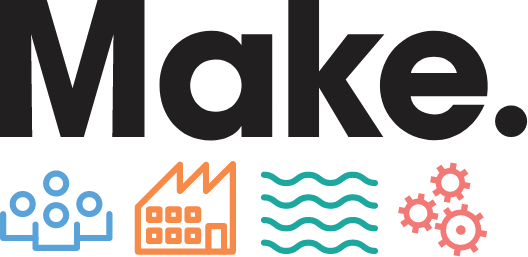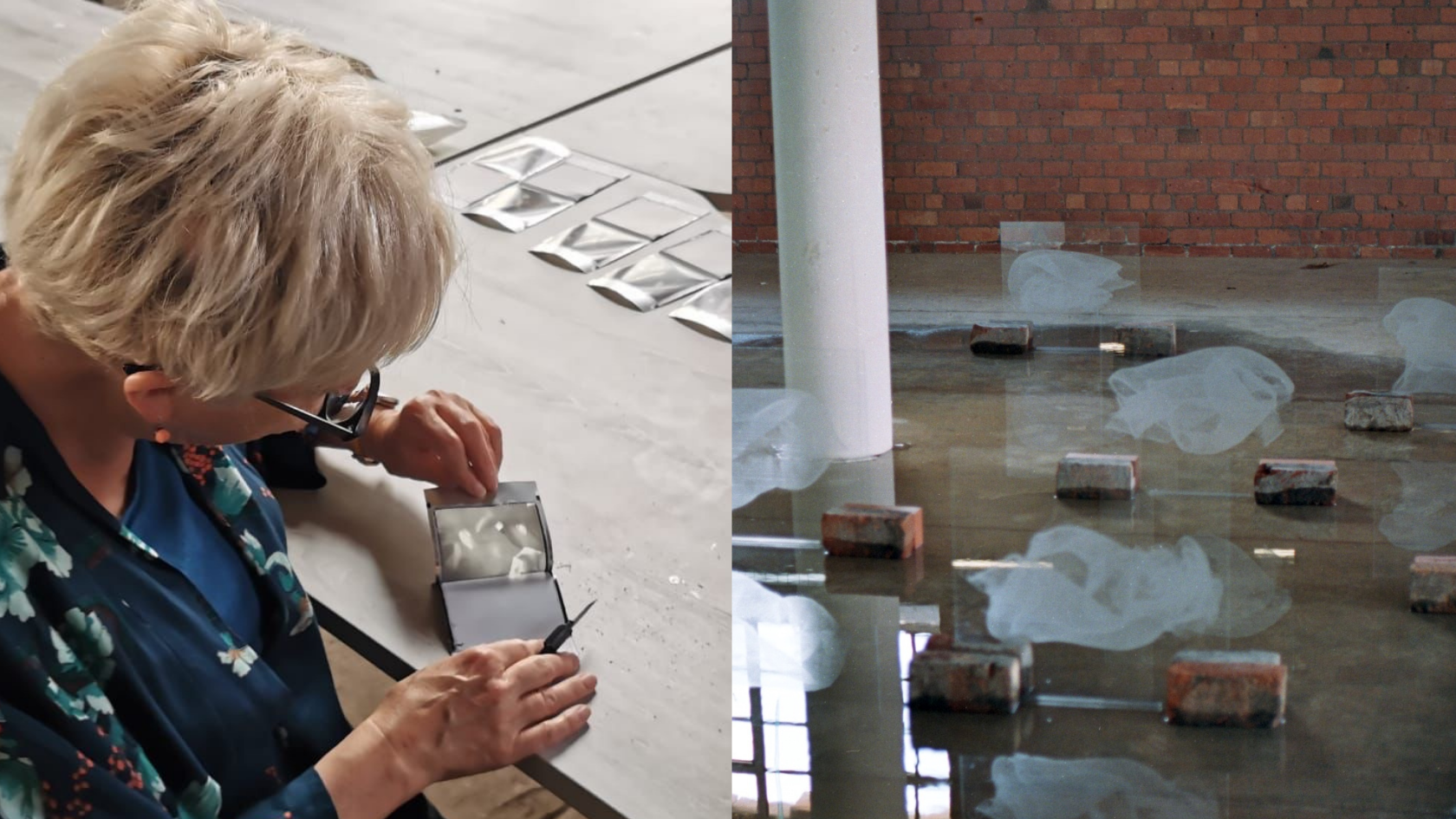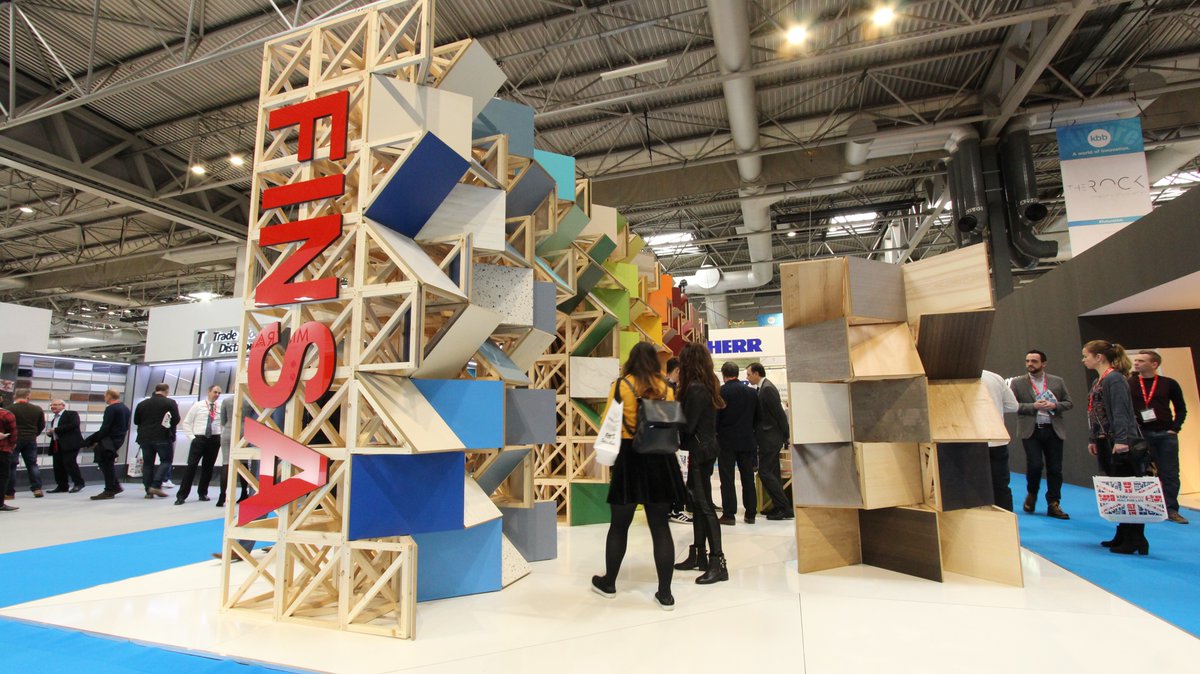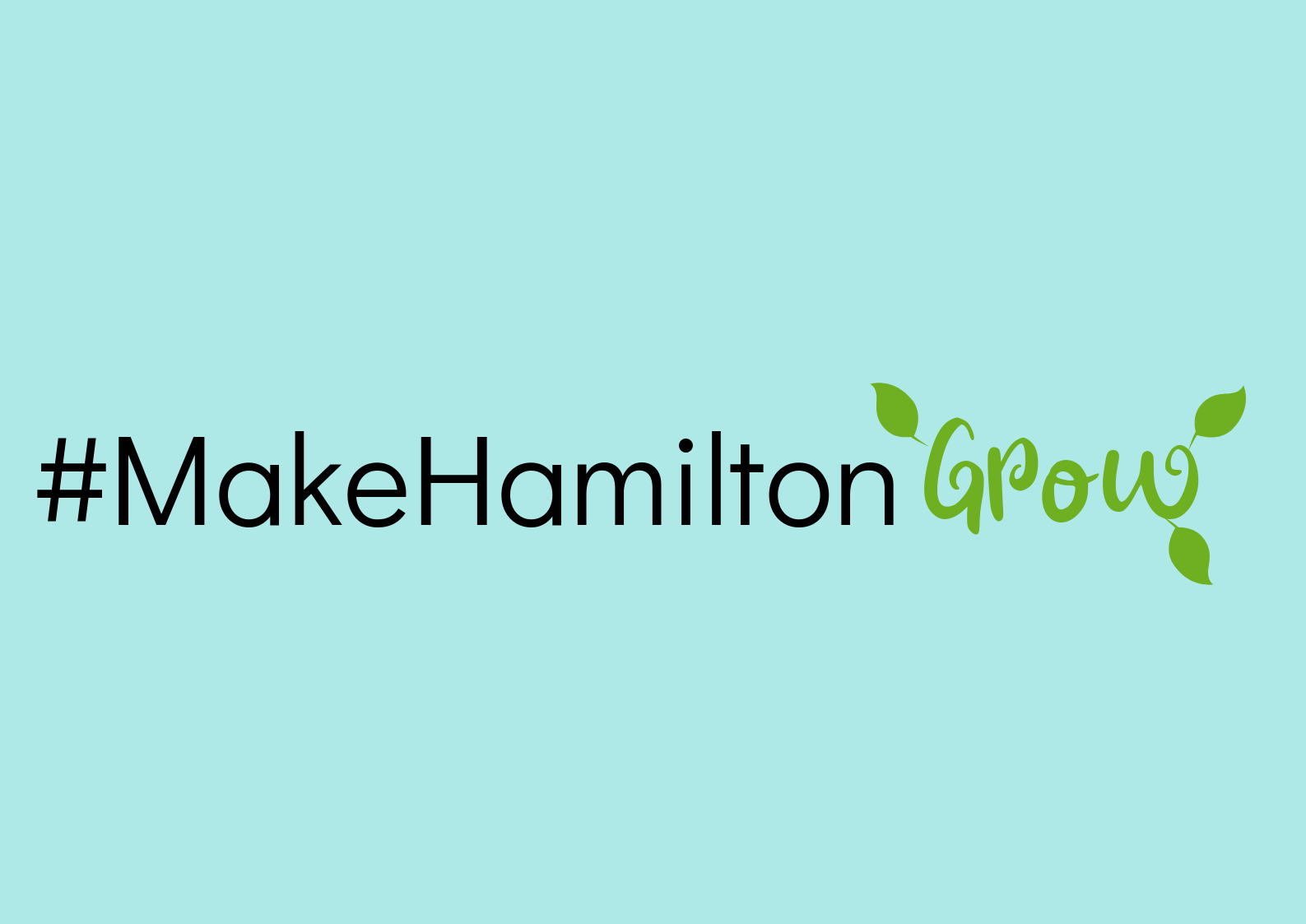For November’s monthly maker, I sat down with Mary Hennessy Jones, an artist working towards a Masters of Fine Art at Liverpool John Moores University. Mary is currently working on a residency at Make North Docks with fellow course members. Over a Riccardo’s cappuccino, Mary and I met to chat about her art projects past and present and her career and journey that led her into art. Mary recently completed the TWAREhouse project at the Tobacco Warehouse, which ended with a fantastic exhibition. Mary told me about the complexities of working in such a vast building, so make sure to read on to find out more!
Hi Mary, can you tell us a little bit about your art practice?
I’m currently studying for an MA in Fine Art at Liverpool John Moores University. My work is focused mainly on sculptures, but I do work across a lot of different mediums.
Lots of my work is site-specific and usually related to the circumstance that I find myself in. So it might be about something that is making me upset, or something I think is unfair or something I find really interesting. It could be provoking an emotional response in me. For example, I’ve been looking at some old records in the bonded warehouse of people who invested in products. I was fascinated by the names on the records. Where they put the men’s name, they would also put his occupation, i.e. a hat maker or solicitor. But for the women, there were only three options next to their name; wife, widow or spinster. And that made me really angry, that their identity was defined by their marital status. Sometimes the records will even say ‘wife of’ then information on their husband. That sort of thing will provoke something in me to try and say something about it through a form of art.
Sometimes I’ll take inspiration from a place I’m in or a story I’ve heard or something I’ve read. I won’t draw or sculpt a scene (although it’s something I like to do occasionally). But I don’t have any sort of emotional response to that in the same way a story or history does.
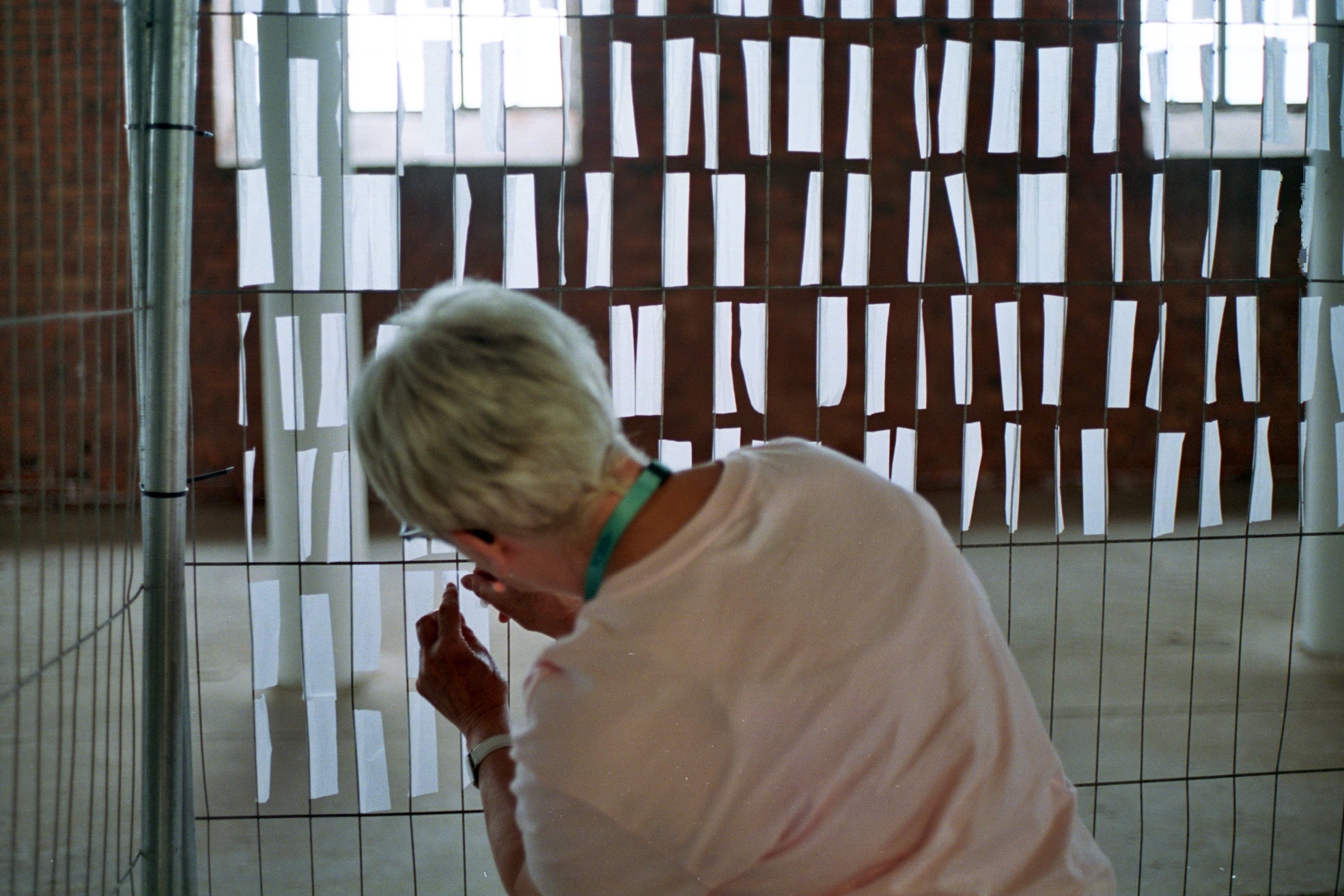
Can you tell us about some of your past projects?
One of the last sculptures I did was about the Tobacco Warehouse utilising materials at the warehouse. I used bricks and pieces of glass, which I did some laser etching on. That involved taking images through photography or drawing and converting them into a file that can be used on the laser etcher and etching onto the glass. The glass pieces overlay each other and create patterns, reflections and distortions.
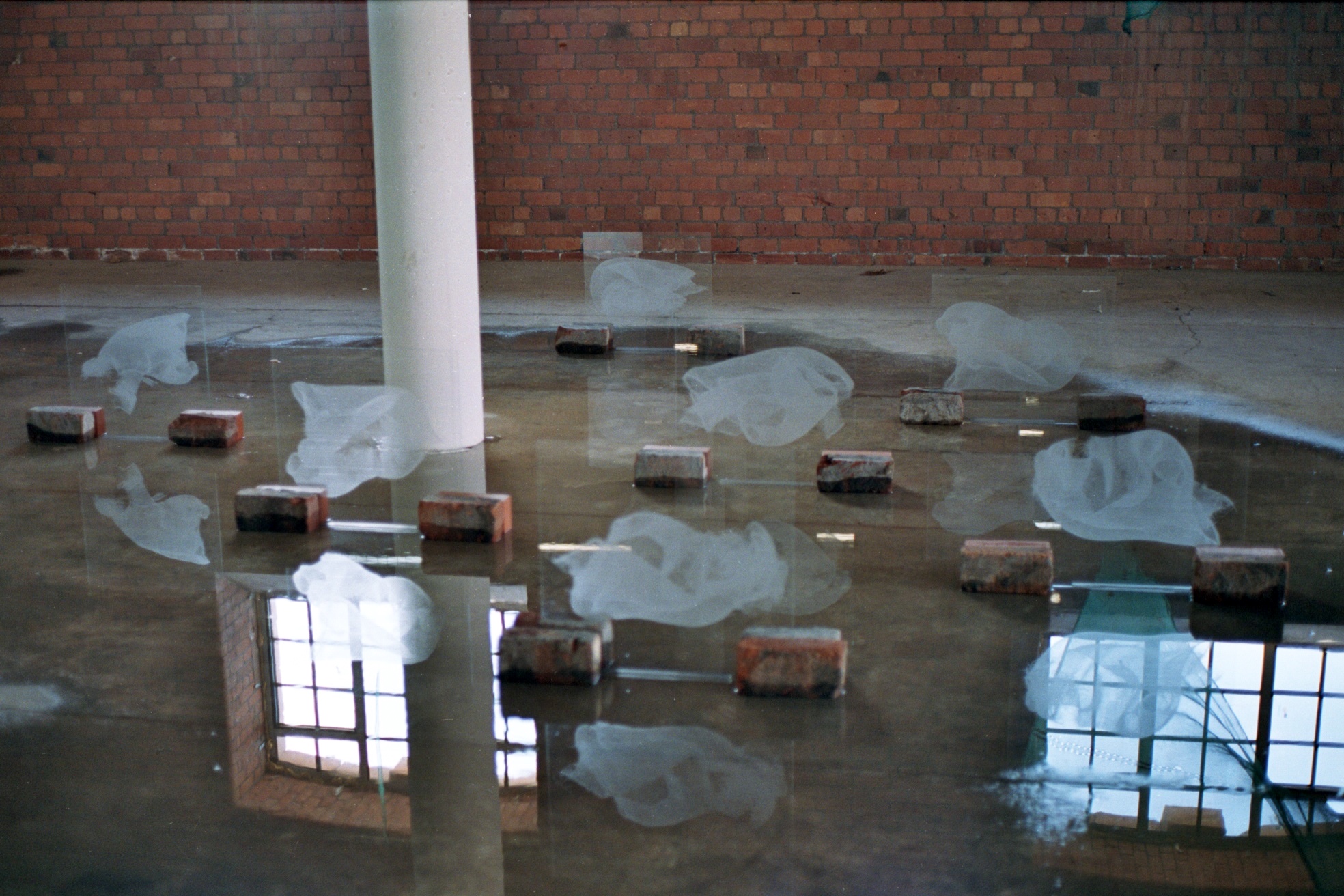
I’m very interested in light. My current project involves puppet theatres and projections. This is probably going back to the shadow puppet work I did as a teacher years ago. I’m trying to incorporate old tech, like old stride projectors. I found some slide photographs from the 1960s and 70s so, I’m trying to combine those with light projections. I’m also making some of my own slides from found materials to see how they look projecting through bits of string or materials I’ve found. I’m also interested in working with liquid, but I’m not sure how to do that yet.
What did you do before your MA?
For the past 4 years, I was doing a foundation course and then a part-time diploma in Art and Contemporary Craft at West Dean College in Sussex. But my first degree was actually in education and teaching. I trained as a teacher in the 1970s. I worked in primary schools for 39 years and was a headteacher for 25 years in five different primary schools, which was just fantastic. There was never a dull moment. It was amazing. But when I decided to retire, I didn’t want to just disappear and lose my identity.
Throughout my life I had always drawn and attended evening art classes which is why I started the diploma in art. I did well in my diploma (which I’m proud to say) so, then someone suggested I go on to do an MA, so I thought, why not? I wanted to stop teaching while I still loved it, so it worked out really well. And I look back at it with great fondness.
You mentioned a project involving bricks. Can you tell us more about that?
Yes, for the past year, I have lived with bricks. I discovered the Tobacco Warehouse while I was on last year’s residency at Make North Docks and was so amazed by its immense volume and scale. I was fascinated by the number of bricks it took to build the warehouse, 27 million of them! It made me wonder about all of the stories that the bricks might hold, having been there for 120 years.
The first piece of work I did was about how to extract the stories from the bricks. I did a sound piece at Make with a human and brick orchestra where people would make sounds out of hitting the bricks. I wanted people to think about what it would have been like when people were building the warehouse and the sounds there then. There is no record of the hundreds of builders it would have taken to do it, but maybe their stories are somehow embedded in the bricks.
In the Absence of Bricks MHJ from MHJ on Vimeo.
What has been one of your favourite projects you’ve worked on?
The TWAREhouse project has been a watershed. We had to set up and run the project ourselves, which became part of my MA. In the end, there were nine of us on the project. Some were artists, researchers and archivists. It was a residency, so we were on site for around 4 months. We were working with the developers and contractors. This meant we had to do a lot of negotiation around working in the building. It was really complex. In the beginning, we wouldn’t have thought we could have done it, but we did!
View this post on Instagram
What would your advice be for anyone who wants to start a journey in art?
If you have art within you, you have to do it, it just eats away with you. Robin Tanner, a teacher and etcher in the mid-twentieth century, wrote a book called Double Harness. He kept two lives going at once. I feel like I did that, but art was always on the back burner. I think you should just do it. Find a class, keep being creative. It’s good for your well-being to be making or doing art. You forget everything else. It’s like having a holiday in your head; you come back feeling refreshed.
Have you got any big projects coming up?
I’ve just started the second year of my MA. I’m working with fellow student Josh Cook to make little wooden boxes in the wood workshop at Make North Docks. We are building a modular house for projection and puppetry. Because it’s modular, it can be used in different ways. We would like to have projections in some of the boxes, puppets in another and maybe some dolls house settings in others.
I want to take the shadow work further forward. I’ve been researching crankies which are rolls of paper or cloth that have drawings on them. You roll along behind a projection to make a moving image. They’re Victorian, but there’s a big cult of making them in North America and Canada. I’m interested in making massive crankies so that life-size people become shadow puppets. I have been looking at the work of William Kentridge. He does some fascinating art and shadow work.
I love being in that space where you don’t quite know what you’re doing and winging it a bit. It’s exhilarating.
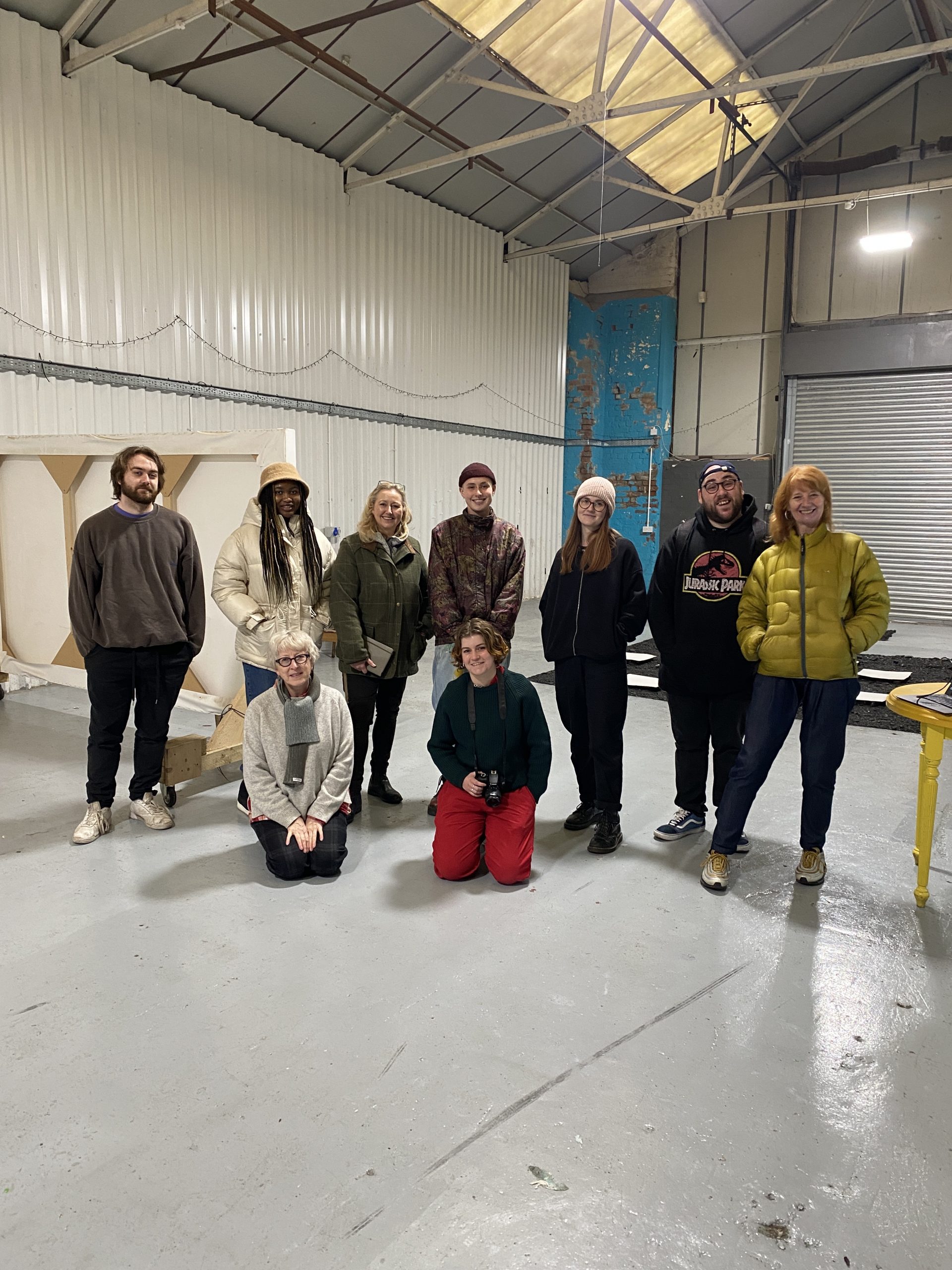
We’ve also talked about doing something similar to the TWAREhouse project again. It was amazing being in the space with the workers as it was changing from an industrial building to a residential one. There will be no record of the workers and how they changed it. So we wanted our art to commemorate and capture that change. I find the idea of going to places that are in the state of flux, between uses or are before they are knocked down or regenerated very interesting.
You mentioned that the Tobacco warehouse was used as a hospital during the war?
The sixth floor was a US military hospital, and the soldiers would draw things on the walls. There were some really brilliant images. One of the artists in the residency, Emma Summerscale, took one of the graffitis from the soldiers and made prints of it on fabric and made some great clothing items out of it. The graffiti is now covered, as the walls had to be fireproofed.
View this post on Instagram
Eleanor Roosevelt came over to visit the soldiers. The warehouse was so vast that they drove her around in a land rover that went up and down in the lifts.
It’s fascinating to think what could be under plaster in a building or under the wallpaper!
It is. I did a big piece of work a couple of years ago about wallpaper at West Dean College. There was some very old wallpaper from the 1800s which was peeling off, in an old building which used to be the home of Edward James, who was the founder of West Dean College. He supported artists such as Salvador Dali and Tchelitchew. He was very involved in the surrealist movement, which is why I did my diploma there. I copied the wallpaper and handmade four rolls of it. I lino printed it then hand-painted it, it took ages! The original wallpaper was so grand and regal and would have been so expensive at the time. I took it to Stoke on Trent and pasted it in an alleyway where there’s lots of graffiti and it is run down. I’m not sure if it’s actually still there! But it was about having that opulence in a very juxtaposed location, and seeing how things decay and fade away.
I think the piece I did with the wallpaper represented how I was feeling at the time. I was thinking, am I supposed to be in this place? I’m a very working-class northern woman in this very opulent upper-class building. But it was good to be there for my diploma and return to Liverpool for my Masters.
Have you learnt any new things recently, maybe a random fact or something about a new medium of art?
I’ve learnt a lot about woodwork from Eddy*, so much so that I’ve started watching the TV show Handmade: Britain’s Best Woodworker! I know all about dovetail joints now (not that I could make one!). And I’ve been talking to Ken, the signwriter at Make, and listening to some of his great stories.
Whilst doing the project at the Tobacco Warehouse, I learnt so much about tobacco. One fact I learnt is that a day of picking tobacco from the sticky leaves is equivalent to smoking 20 cigarettes. It absorbs through their skin, and it was often small children who would pick them.
Where can people find your work?
You can find my work on my website here.
INTERESTED IN JOINING SUE IN THE MAKE COMMUNITY?
We’d love to have you! Find out more about our studios HERE or drop us a line at HELLO@MAKECIC.ORG.
Be sure to follow us on INSTAGRAM, FACEBOOK, and TWITTER and SIGN UP to our mailing list to stay up to date.
